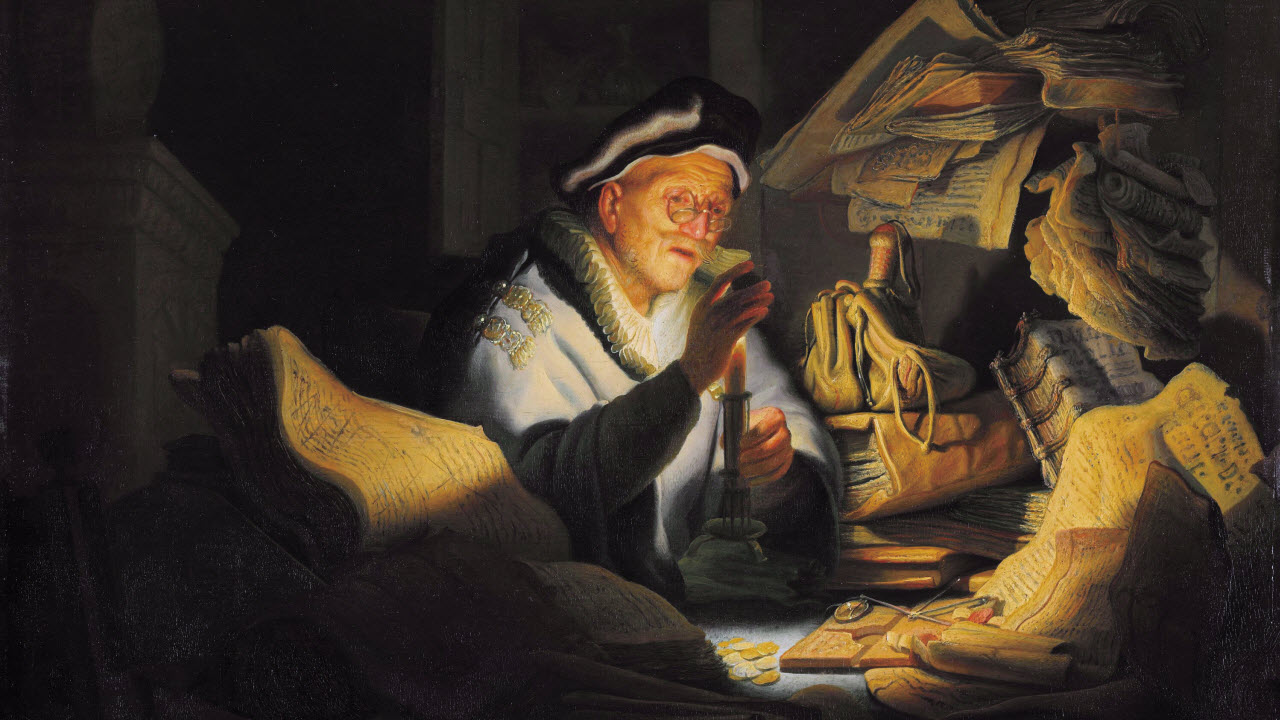Rembrandt's The Parable of the Rich Fool
A Visual Warning Against the Vanity of Wealth

Rembrandt’s painting captures the rich man lit by candlelight as he inspects his wealth—coins and ledgers before him. The towering stack of books symbolizes his worldly knowledge and wealth, as books were rare and costly in Rembrandt’s time, representing status and a constant pursuit of knowledge.
Yet, despite his wealth and intellect, the man is spiritually bankrupt. The chaotic stack hints at his misplaced priorities and the futility of trusting in material security.
The dim lighting emphasizes his isolation and hidden anxiety, masked by pride in his possessions. Unaware his time is nearly over, he clings to the false promise of wealth. Through his masterful use of light and shadow,
Rembrandt communicates the moral of the scene: the fleeting nature of riches and the danger of greed, revealing the vanity of pursuing earthly treasures while neglecting one’s soul.Related Articles

September 10, 2025
How to Find True Wealth
Some people think being rich means owning a lot of things—when in reality, being “rich” often means a lot of things owni...

September 3, 2025
God Owns It All: The Life-Changing Implications of Being a Steward
Acknowledging this truth that God owns everything means embracing the following responsibilities......

July 21, 2025
More Than Enough: Rethinking Scarcity Through the Lens of God’s Abundance
In a world where scarcity seems to define our daily experience, it’s easy to feel like there’s never enough. But is that...